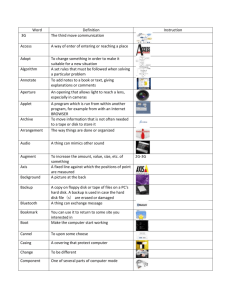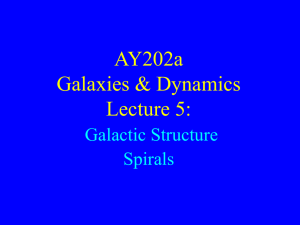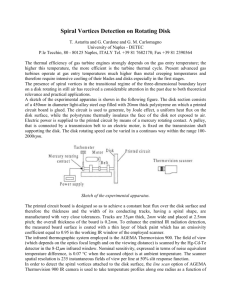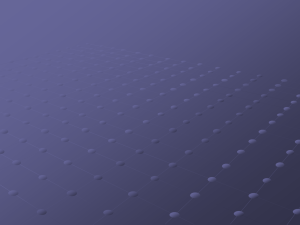Depth Spinner - Seattle Central College
advertisement
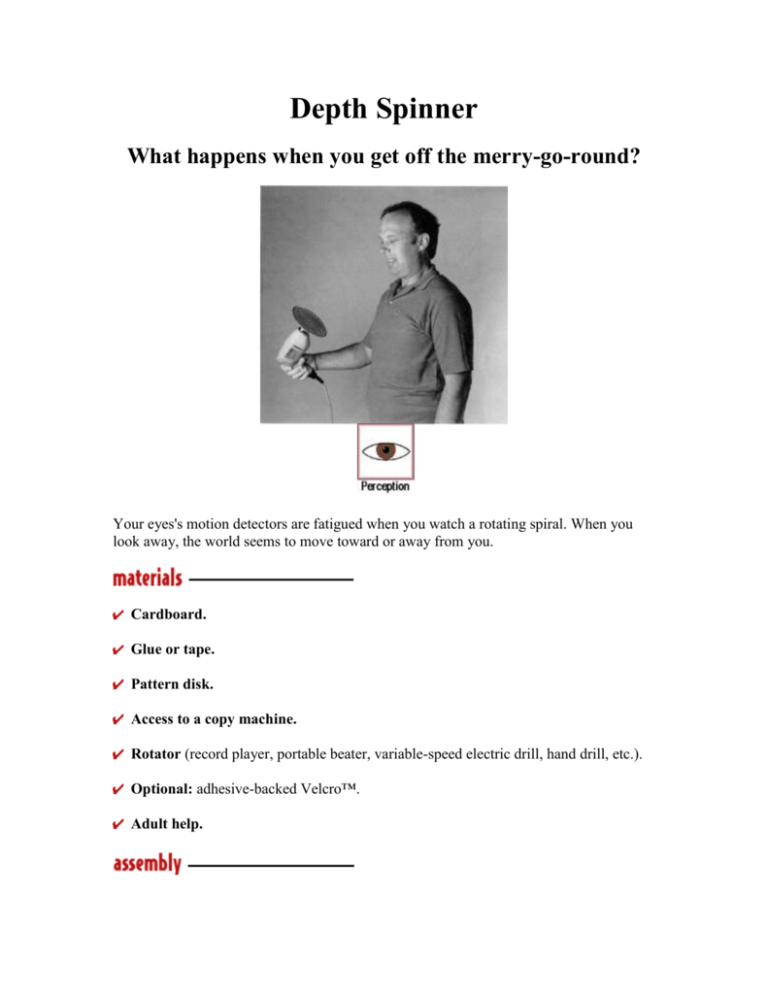
Depth Spinner What happens when you get off the merry-go-round? Your eyes's motion detectors are fatigued when you watch a rotating spiral. When you look away, the world seems to move toward or away from you. Cardboard. Glue or tape. Pattern disk. Access to a copy machine. Rotator (record player, portable beater, variable-speed electric drill, hand drill, etc.). Optional: adhesive-backed Velcro™. Adult help. (15 minutes or less) Make a copy of the pattern disk provided as a separate page, here. Cut the pattern out and mount it on a circle of cardboard with glue or tape. Attach the disk at its center to a rotator. Old phonograph players that spin at 45 or 78 rpm are great for this. Adhesivebacked Velcro™ can be used to secure the disk to a variable-speed electric drill. The drill may also be reversed. (5 minutes or more) Start the spiral rotating and stare at its center for about 15 seconds. Look away from the disk and stare at a wall or a nearby person. Notice that the wall or person seems to be expanding or contracting, like he or she is rushing toward you or away from you. If you can, try rotating the spiral in the opposite direction. Now what happens when you look up from the spinning pattern? Your visual system is sensitive to inward and outward motion. There are nerve cells in the visual cortex that fire more when objects move outward from the center of your field of view, and others that fire more when objects move inward. When you are looking at something that is standing still, the inward and outward channels are in balance with one another; they send equally strong signals to your brain. When you stare at this moving pattern, however, one detector channel gets tired. Then, when you stare at the wall, the detector that hasn't been working sends a stronger signal to your brain than the tired one. If, for example, the spiral seemed to be moving away from you, the wall will seem to be moving toward you when you look up. If you rotate the spiral in the other direction, so that it seems to be moving toward you, the wall will then seem to be moving away when you look up. You can make duplicates of the depth spinner. Make many copies of the pattern disk. Cut out the copies and paste them on small cardboard backings. You can spin your disk on a pencil point or a pin, or attach a disk to a pencil eraser with a pushpin. Next time you are near a waterfall, try staring at one point of the waterfall for a minute. Then look at a rock or another stationary object to the side of the waterfall. The solid object will seem to flow upward. This apparent motion is due to the fatigue of the channels in your visual system that detect linear upward and downward motion.





